Monstera aerial roots can die off if they are physically damaged or affected by fungus or disease. To prevent these problems, avoid overwatering monstera plants, use sharp, clean secateurs to trim off damaged roots and repot the plant into fresh potting soil if it has poor drainage.
Monstera plants will use aerial root to stabilize the vine as it grows and to access extra water and nutrients. They are not essential to healthy plant growth so can be trimmed off if they are damaged. They will usually grow on the outside of the plant node or close to the soil.
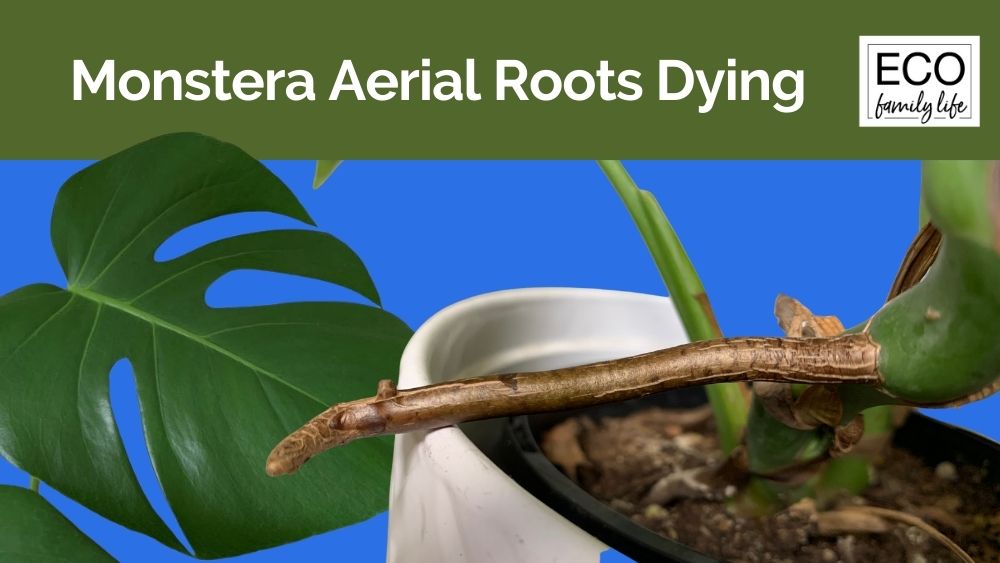
This article will explore the top 5 causes of dying aerial roots on monstera plants and what you can do to solve each one.
Monstera aerial root rot
The top cause of monstera roots dying is aerial root rot. This is a fungal disease caused when there is too much moisture in the air or added to the plant. This can happen if you are overwatering or if the plant is outside and exposed to heavy rainfall over a long period of time.
This fungal growth will cause the root to turn black, shrivel and die off. Root rot can also affect monstera roots that are under the soil if they are overwatered or if the soil or pot is not draining well.
What causes monstera aerial roots to die off
Here are the top causes of dying monstera aerial roots. Each of these can cause the plant to suffer and for the root to shrivel up.
1. Too much water
The top cause of a dying monstera aerial roots is adding too much water to the plant or if they are exposed to excessive rainfall. Extra water sitting on the aerial roots can cause fungal growth which will cause the root to turn black and die.
To solve this problem, reduce your watering schedule and only water the at the soil level. Avoid putting any water on the aerial roots or stems of the plant. If you are experiencing heavy rainfall then bring the plant inside or under cover to prevent overwatering.
2. Too much humidity
High humidity levels can cause rot or damage to the monstera aerial roots. Monstera are tropical plants so like higher humidity levels but if they are prolonged then the aerial roots can suffer.
Move the plant to an area of your house that gets greater air flow, move them out of bathrooms or laundry areas where humidity is high and open a window. You can move indoor monstera plants outdoors to a sheltered position that gets morning filtered light to increase air flow.
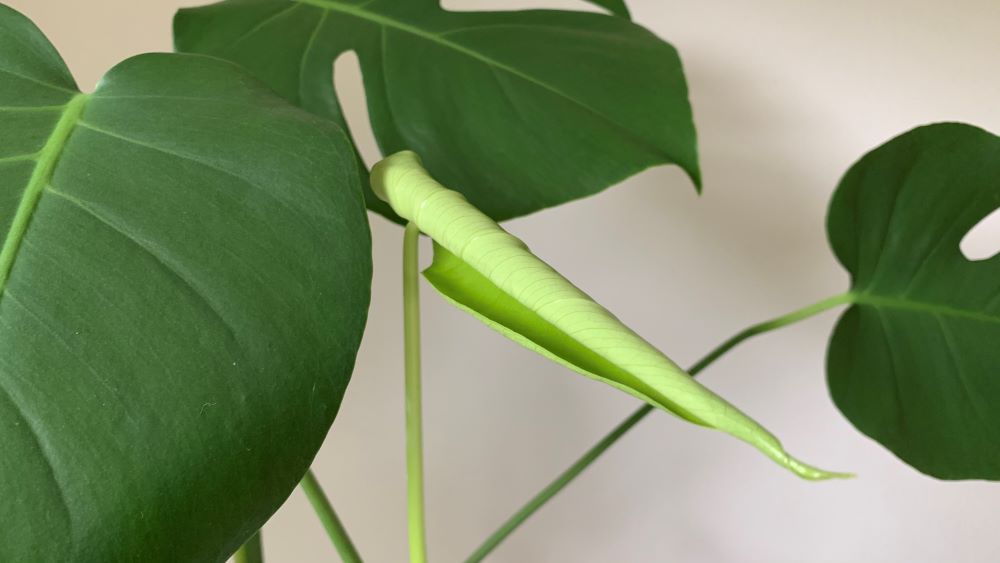
3. Physical damage to the roots
Another common cause of dying monstera aerial roots is physical damage. Pets or kids running past can easily bump monstera plants which can cause the aerial root to bend or snap. Any damage to the root can stop the flow of water or nutrients and can kill it off.
Damaged roots can also allow disease to enter the plant. If you notice that the aerial root has bent or is broken then it is best to snip it off with sharp, clean secateurs. The cut point will heal over quickly. Just avoid putting water over this area for a few weeks.
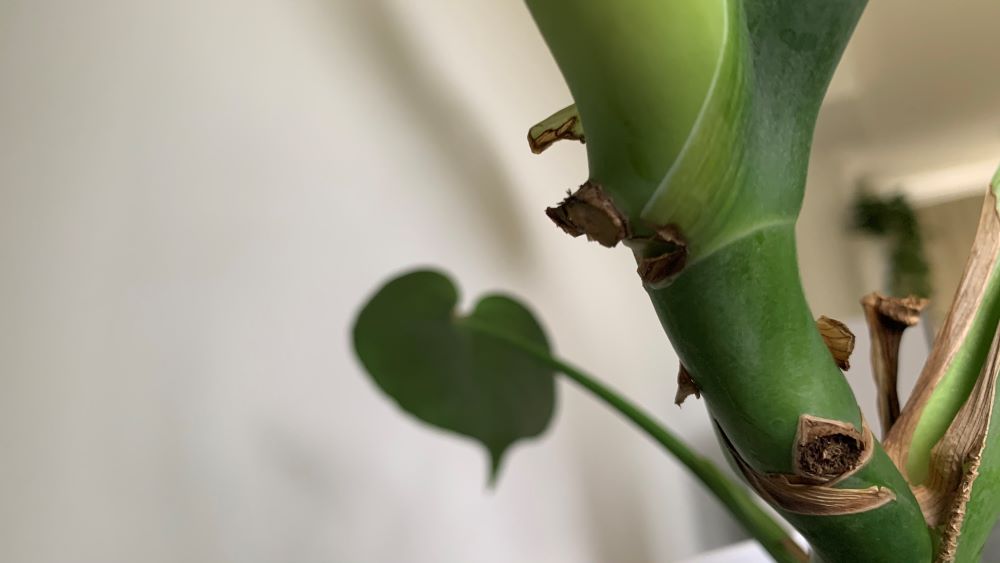
4. Infection from secateurs
Using dirty secateurs to trim your monstera or aerial roots can introduce disease from other plants. This can quickly cause the plant or aerial root to die back by introducing fungus or pests. If this starts to happen, trim the root off with clean secateurs and put it in the garbage to prevent the spread.
5. Poor soil
Poor soil can lead monstera plants suffering and their aerial root dying off. Monstera need well-draining soil with a steady supply of nutrients and water. If the soil stays too wet the in ground and aerial roots can rot. If the plant lacks nutrients then its growth can suffer and the aerial roots will die off.
Plant monstera in good quality all-purpose potting soil. Choose a pot with at least 5 drainage holes so that water can flow through. For indoor monstera, place this pot inside a cache pot or outer pot that does not have drainage holes to catch the drips.
To water the plant and avoid overwatering, take the inner pot outside or over to your sink to thoroughly water the soil. Allow it to drain well before returning it to the indoor pot without drainage holes.
How to fix dying monstera aerial roots
Here are my top stops to follow to fix dying monstera aerial roots. These will help the plant to recover and prevent the spread of any disease or fungus that might be affecting the root.
1. Chop them off
The first step is to chop off any damaged monstera roots with clean, sharp secateurs. You can clean the secateurs with rubbing alcohol, eucalyptus spray or wash them with warm soapy water to remove any disease or old plant material. Rub the blades with vegetable oil to prevent rust after pruning.
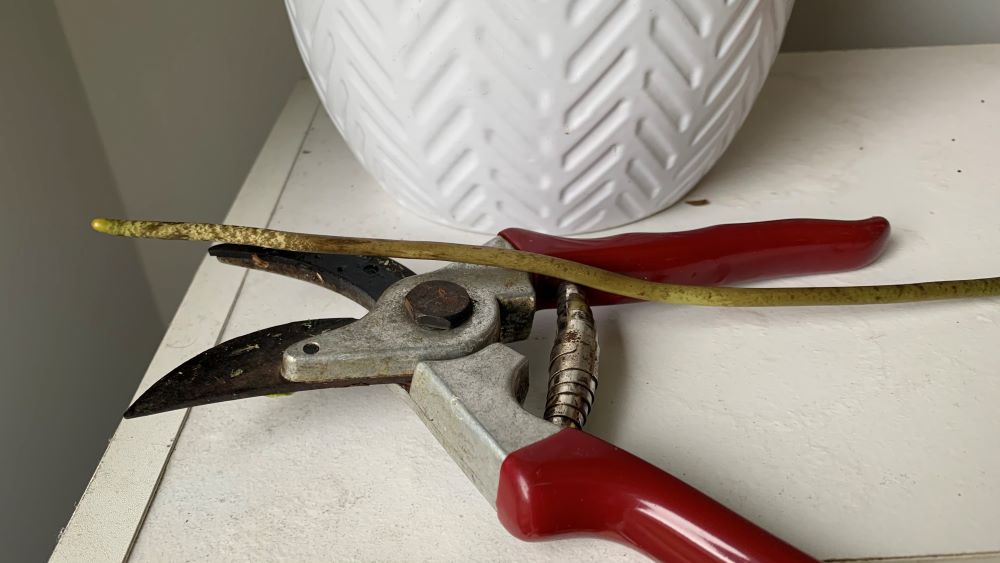
2. Repot the plant
Monstera plants suffering from poor draining soil will recover quickly if they are repotted into fresh, good quality potting soil. Remove the plant from the pot and allow any excess old potting soil to drop off of the roots.
You can use the same pot if you like, just disinfect it first with warm soapy water and allow it to dry. You can then repot the plant into the same pot or one that is 1-2 inches wider and deeper.
This will give the plant more air and remove excess fungus growth in the soil.
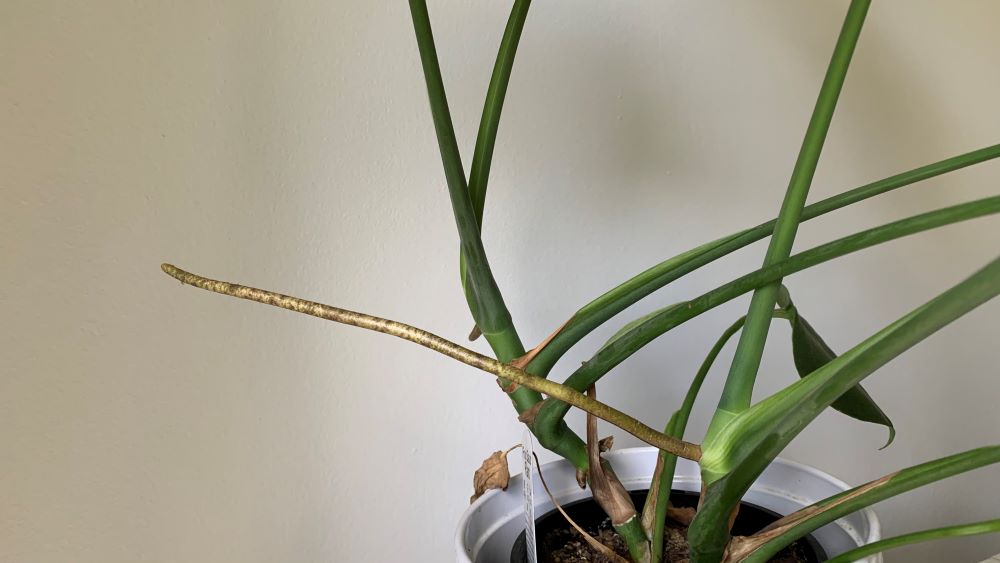
3. Reschedule your watering
Water monsteras when the soil is dry 1-2 inches below the surface. Too much water can cause roots to rot and die. I like to water my monstera once per week in summer, once every 2 weeks in spring and fall and once every 3-4 weeks over winter.
Dying Monstera Aerial Roots | Summary
Monstera aerial roots can die off if they are affected by fungus, damaged or knocked or if the plant is overwatered. Look carefully at the root for any damage but the easiest solution is to trim it off. Figure out the cause so you can prevent it happening again and you will have a happy healthy monstera.
Happy growing.
I am an accredited practicing dietitian, experienced gardener and a dedicated cook. I love writing and sharing my experience so you can learn from my successes and mistakes.
